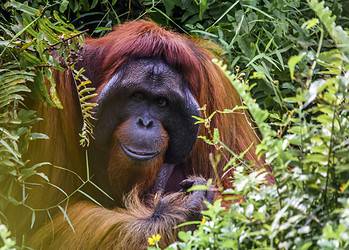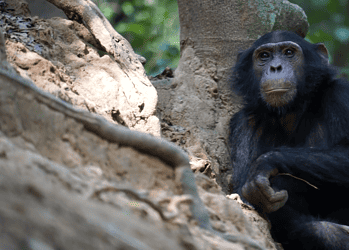In Uganda’s Budongo Central Forest Reserve, chimpanzees have been observed engaging in something intriguing: consuming specific plants with medicinal properties to treat ailments. The multi-organizational study, published in PLOS ONE combined chimpanzee behavior observations with laboratory plant sample testing.
The researchers monitored 51 chimpanzees from two communities in the Budongo Forest, collecting plant samples from 13 different species. These samples were then tested for their antibacterial and anti-inflammatory properties. Interestingly, 88% of the plant extracts inhibited bacterial growth and 33% showed anti-inflammatory properties, suggesting these chimpanzees are making their own natural pharmacy.
Chimp behavior observations provided compelling insights into their use of these plants. One notable instance involved a male chimpanzee with an injured hand who sought out and ate the leaves of the Christella parasitic fern. The study found the fern’s anti-inflammatory properties likely helped reduce the pain and swelling in his hand. Another chimpanzee, suffering from a parasitic infection, was seen consuming Scutia myrtina bark, possibly aiding in combating the infection. This is the first published evidence of chimpanzees using S. myrtina bark for medicinal purposes.
These behaviors suggest that chimpanzees may intentionally seek out specific plants for their medicinal effects, displaying an advanced understanding of natural remedies.
Chimp doctors
Bark and resin from the East African mahogany tree Khaya anthotheca were found to have robust anti-inflammatory activity, with the methanol-water extract showing the most potent effect. Previous studies have shown that Khaya species contain biologically active compounds like gedunins, mexicanolide, phragmalin, and andirobins, which contribute to their medicinal properties. This tree is traditionally used in African villages for treating various ailments, including allergies, fever, headaches, jaundice, and bacterial infections. In Budongo, chimpanzees frequently consume this tree, perhaps similarly for health purposes.
One of the standout discoveries was that dead wood from Alstonia boonei displayed the strongest antibacterial activity and significant anti-inflammatory effects. The dead wood ended up having higher antibacterial and anti-inflammatory activity than extracts from living bark. This difference could be due to changes in active ingredient composition or possible fungal growth after the tree’s death.
The tree is well-known for its medicinal use across the region, commonly employed for treating reproductive, bacterial, and gastrointestinal issues. It has additionally been used for snake bites, asthma, and dizziness. Chimpanzees in Budongo have been observed to travel long distances to access these A. boonei trees for treatment. They often consume small amounts of bark per feeding bout, indicating a targeted use likely for its medicinal properties.
Syzygium guineense bark and leaves also exhibited a range of pharmacological activities. The methanol-water bark extract demonstrated strong antibacterial effects against various bacteria, including those commonly infecting humans like Pseudomonas aeruginosa and Stenotrophomonas maltophilia. This tree is traditionally used for treating malaria, stomach aches, diarrhea, internal parasites, and infertility. Although ingestion of S. guineense bark is rare in Budongo, its potent medicinal properties suggest that chimpanzees could use it for specific health conditions as well.
This behavior is not unique to chimpanzees though.
In another striking example of animal self-medication, an orangutan named Rakus from Indonesia was observed creating a medicinal paste to heal a facial wound. After obtaining an injury from a rival orangutan, Rakus chewed leaves from a liana called Fibraurea tinctoria, known for its analgesic, anti-inflammatory, and antibacterial properties. He then applied the paste to his wound which began to heal within five days. This behavior was intentional, as Rakus only applied the plant juice to the wound and rested more than usual to aid his recovery.
The findings highlight the significance of conserving forest habitats, which in addition to all of its known benefits, can also act as valuable sources of medicinal plants for wildlife and possibly humans. The new research shows the intertwined relationship between wildlife and potential medical advancements, highlighting the need to protect natural ecosystems for the benefit of all species.







